Unit 6 Business Management Toolkit (BMT)
Circular Business Models (CBM)


What is a circular business model?
A circular business model can be defined as one that incorporates sustainable practices by reusing, recycling, and refurbishing materials to extend the life cycle of products, conserve resources, and minimize waste. This is very different from a ‘traditional’ or ‘linear’ model.
Or
a circular business model is a sustainable approach in which businesses focus on reducing waste, reusing resources, and creating closed-loop systems where materials and products are continually repurposed rather than discarded. This model contrasts with the traditional linear business model (produce, use, dispose) by emphasizing the cyclical reuse and regeneration of materials, which helps reduce environmental impact and resource dependency.
Sounds good....got any examples?
An example of a circular business model is a tech company that designs smartphones to be modular and easily repairable. Instead of encouraging customers to replace their devices frequently, this company offers services for upgrading, repairing, and refurbishing existing phones. When a phone reaches the end of its life, the company collects it, disassembles it, and reuses components in new devices or recycles them to recover valuable materials like metals and plastics. This approach reduces electronic waste, conserves resources, and fosters a more sustainable production cycle.
Such a model encourages both environmental and economic sustainability, as it reduces raw material costs and appeals to consumers who prioritize eco-friendly brands.
Real world example, Passive Haus


A Passive House construction company may design homes that incorporate locally sourced, recyclable materials, ensuring minimal environmental impact during construction. The homes require little external heating or cooling, dramatically reducing energy consumption over their lifespan. At the end of the building’s life, materials can be reclaimed or repurposed, further minimizing waste.
Conclusion:
The Passive House standard’s emphasis on resource efficiency, durability, energy savings, and reduced waste makes it a strong example of a circular business model in the construction industry. It reflects circularity by prioritizing sustainability at every stage, aligning well with the principles of CBM
Are there different types of CBM model?
The IB BM syllabus identifies 5 different models
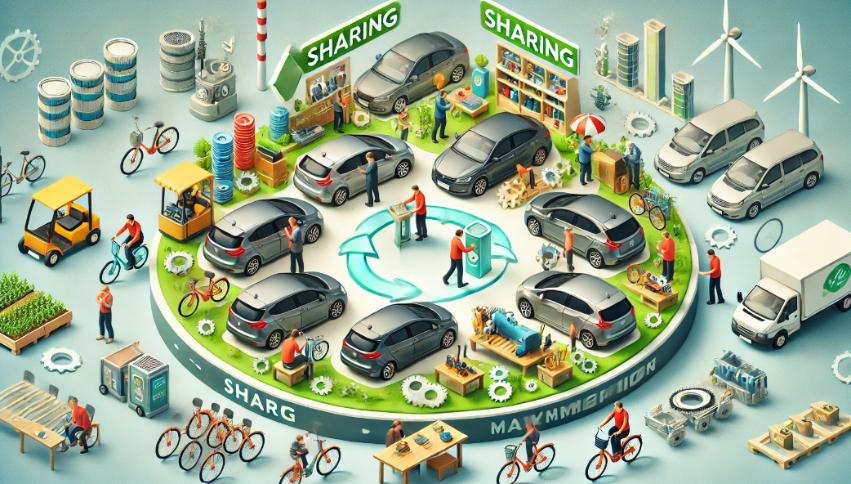
Model #1 Sharing models
These models promote shared access to products rather than individual ownership, thereby maximizing the utilization. Examples include car-sharing services and equipment rental businesses, which allow multiple users to benefit from a single product, reducing overall production demand.

Model #2 Product life extension models
Companies using this model focus on extending a product’s lifecycle through repair, maintenance, refurbishment, and remanufacturing. This approach reduces the need for new production and conserves resources by keeping products in use for longer periods.
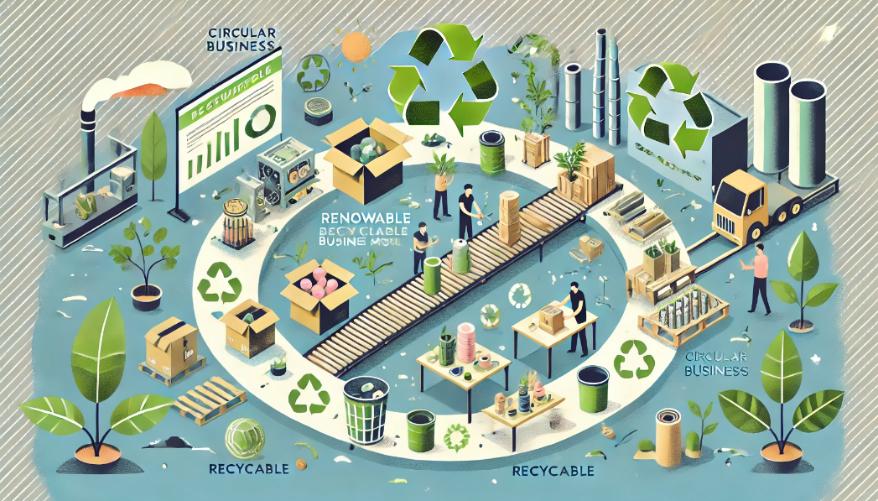
Model #3 Circular supply models
These models emphasize the use of renewable, recyclable, or biodegradable inputs in the production process, reducing dependency on finite resources. By shifting to sustainable materials, companies can cut waste and mitigate risks associated with resource scarcity.

Model #4 Product service system models
Instead of selling a product outright, businesses offer it as a service, shifting from product ownership to access. For instance, companies might lease machinery or provide subscription-based access to equipment, allowing customers to benefit from the product without owning it.
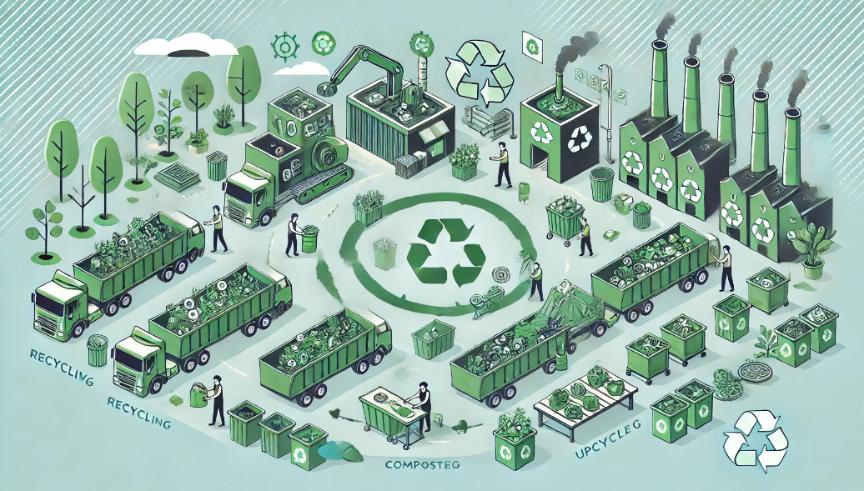
Model #5 Resource recovery models
This approach involves reclaiming valuable materials from waste and reintegrating them into production. Resource recovery minimizes landfill waste by using methods such as recycling, composting, and upcycling to extract resources from discarded products.
Case Study 1: Eco Brick
EcoBrick Ltd. is a company specializing in transforming used plastic bottles and industrial by-products into sturdy, eco-friendly building materials. Sourcing its raw materials from local recycling centers and businesses, EcoBrick minimizes landfill waste while offering cost-effective construction options. They operate in the construction industry, making sustainable, affordable bricks widely available. Through its processes, EcoBrick reduces waste and showcases its commitment to a greener economy.

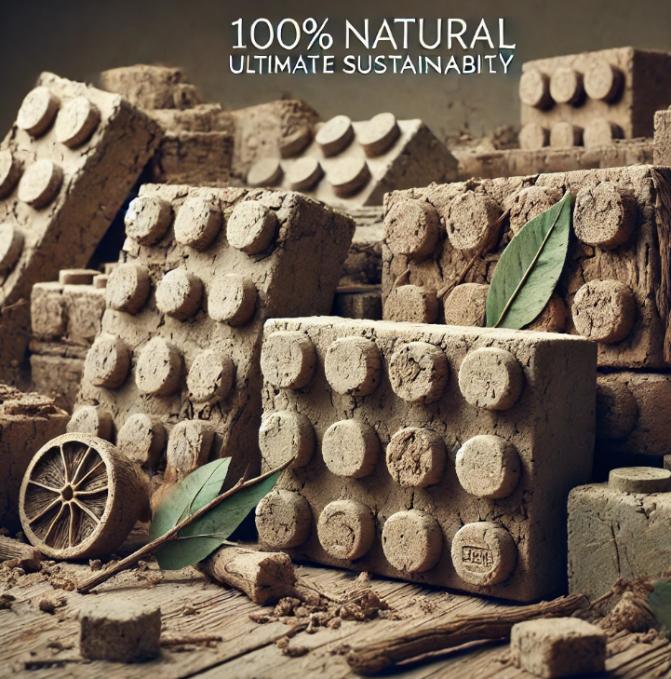
Case Study 2: RepairNest
RepairNest operates in the electronics sector, offering a range of services to increase the lifespan of personal devices. They provide repairs, refurbishment, and upgrades on smartphones, laptops, and tablets, reducing the need for new device production. Customers can trade in their old gadgets, which RepairNest refurbishes and resells, enabling more consumers to access affordable technology while reducing electronic waste.


Case Study 3: OpenRide
OpenRide is a car rental service focused on minimizing car ownership in urban areas. Members can reserve and use vehicles on-demand, paying for only the time they drive. This model offers flexible mobility to users while reducing the overall number of cars needed in the city. OpenRide encourages responsible vehicle use, benefiting both customers and the urban environment by reducing congestion and pollution.


Case Study 4: Toolshare
ToolShare Inc. is a company focused on providing shared access to high-quality tools and machinery for home renovators, DIY enthusiasts, and small construction businesses. Sourcing premium, durable tools and machinery, ToolShare minimizes resource waste by allowing customers to rent items they need only occasionally. Operating primarily in the DIY and construction industries, ToolShare offers an affordable, convenient alternative to ownership, ensuring that customers have access to the latest equipment without the financial burden or environmental impact of buying.
Case Study 5: Jotify Inc
Jotify Inc. is a company that provides students with access to online notebooks hosted in the cloud. Instead of selling software or individual notebook files outright, Jotify offers a subscription-based service that allows users to create, organize, and access their notes anytime, anywhere, without owning the software or storage infrastructure.
Operating within the education and productivity sector, Jotify is tailored for students seeking efficient, accessible, and eco-friendly alternatives to physical notebooks and local storage. Subscribers gain access to advanced note-taking features, including multimedia integration, collaborative editing, and organization tools, which are regularly updated as part of the service.
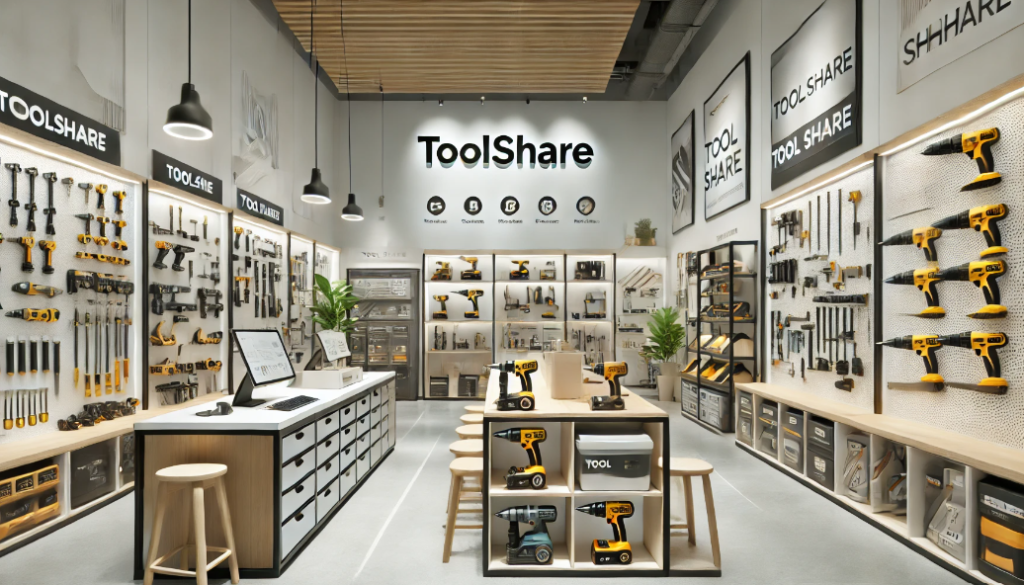
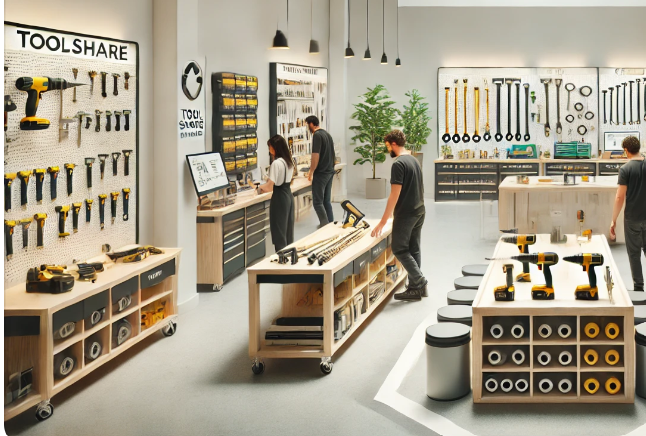
Questions
- Initial discussion question: Can you find a real-world example business for each of the 5 circular business models?
- Categorise the case studies above (1 – 5) into their respective CBM model labels [5]
- Define a circular business model [2]
- What is meant by a traditional or linear model of business [2]
- Explain two disadvantages (other than cost) of circular business models
- Describe a business whose operations cross over between more than one CBM [5]
- Suggest how companies may benefit from lengthening the life-span / life cycle of their products from the point of view that this would result in potentially fewer sales [5]
Benefits and drawbacks of circular business models (CBM)
Benefits of Circular Business Models
Resource Efficiency and Cost Savings:
- Benefit: Circular business models can lead to lower operational costs by minimizing the use of virgin materials and reducing waste. Models like resource recovery, where waste is converted into raw materials, allow businesses to reuse inputs, which lowers production costs over time.
- Example: A company that uses recycled materials instead of new resources saves money and reduces its environmental footprint.
Enhanced Brand Image and Customer Loyalty:
- Benefit: Adopting sustainable practices enhances a company’s reputation, particularly with consumers who prioritize eco-friendly businesses. This can lead to increased customer loyalty and a stronger brand image.
- Example: Companies that implement sharing models or product life extension strategies (such as offering maintenance services) show a commitment to sustainability, attracting consumers who value ethical business practices.
Regulatory Compliance and Future-Proofing:
- Benefit: As governments worldwide enforce stricter environmental regulations, circular models help businesses comply with such standards and reduce risks associated with environmental non-compliance. This prepares companies for future regulations that might mandate sustainable practices.
- Example: Companies using circular supply models might avoid fines or gain incentives for meeting regulatory standards on waste reduction or emissions.
Innovation and Competitive Advantage:
- Benefit: Circular business models often encourage innovation in product design, process efficiency, and waste management, setting companies apart from competitors. Through these innovative approaches, businesses can develop unique products and services that attract environmentally-conscious consumers.
- Example: A company that adopts a product-as-a-service model can offer a unique subscription model for products, creating new revenue streams and appealing to customers who prefer access over ownership.
Drawbacks of Circular Business Models
High Initial Investment and Implementation Costs:
- Drawback: Transitioning to a circular business model can be costly, as it often requires restructuring supply chains, redesigning products, and implementing new processes. These expenses can be a significant barrier, especially for small and medium-sized enterprises (SMEs).
- Example: A business transitioning to a resource recovery model may need to invest in new technology and machinery for recycling or remanufacturing, which can be costly upfront.
Complex Supply Chain and Logistics Management:
- Drawback: Circular models require a closed-loop system, which can add complexity to supply chains. Managing returns, refurbishments, or recycled materials involves logistical challenges and potential inefficiencies if the reverse logistics process is not well-managed.
- Example: For product life extension models, managing the collection, repair, and redistribution of products can increase operational complexity and affect timelines and costs.
Uncertain Consumer Demand and Market Readiness:
- Drawback: Some consumers may not be ready to embrace models like product-as-a-service or sharing models. Market acceptance of refurbished or reused products can also be uncertain, depending on consumer attitudes toward ownership and the perceived quality of reused items.
- Example: In markets where consumers value new products or ownership, a product life extension or sharing model may struggle to gain traction.
Technology and Skill Requirements:
- Drawback: Implementing circular models may require advanced technology and specialized skills, especially in resource recovery or recycling processes. Companies may need to invest in training or hire experts, which can add to costs and operational challenges.
- Example: A company looking to develop a circular supply model may need specialized machinery and personnel with expertise in sustainable production methods.
Potential for Reduced Profit Margins:
- Drawback: Some circular models, like product life extension and sharing models, can reduce the frequency of customer purchases. While these models might increase customer loyalty, they can decrease sales volume and affect profit margins unless balanced with other revenue-generating strategies.
- Example: A company that rents out products instead of selling them outright may generate less revenue per product, impacting profit margins unless offset by a larger customer base.
